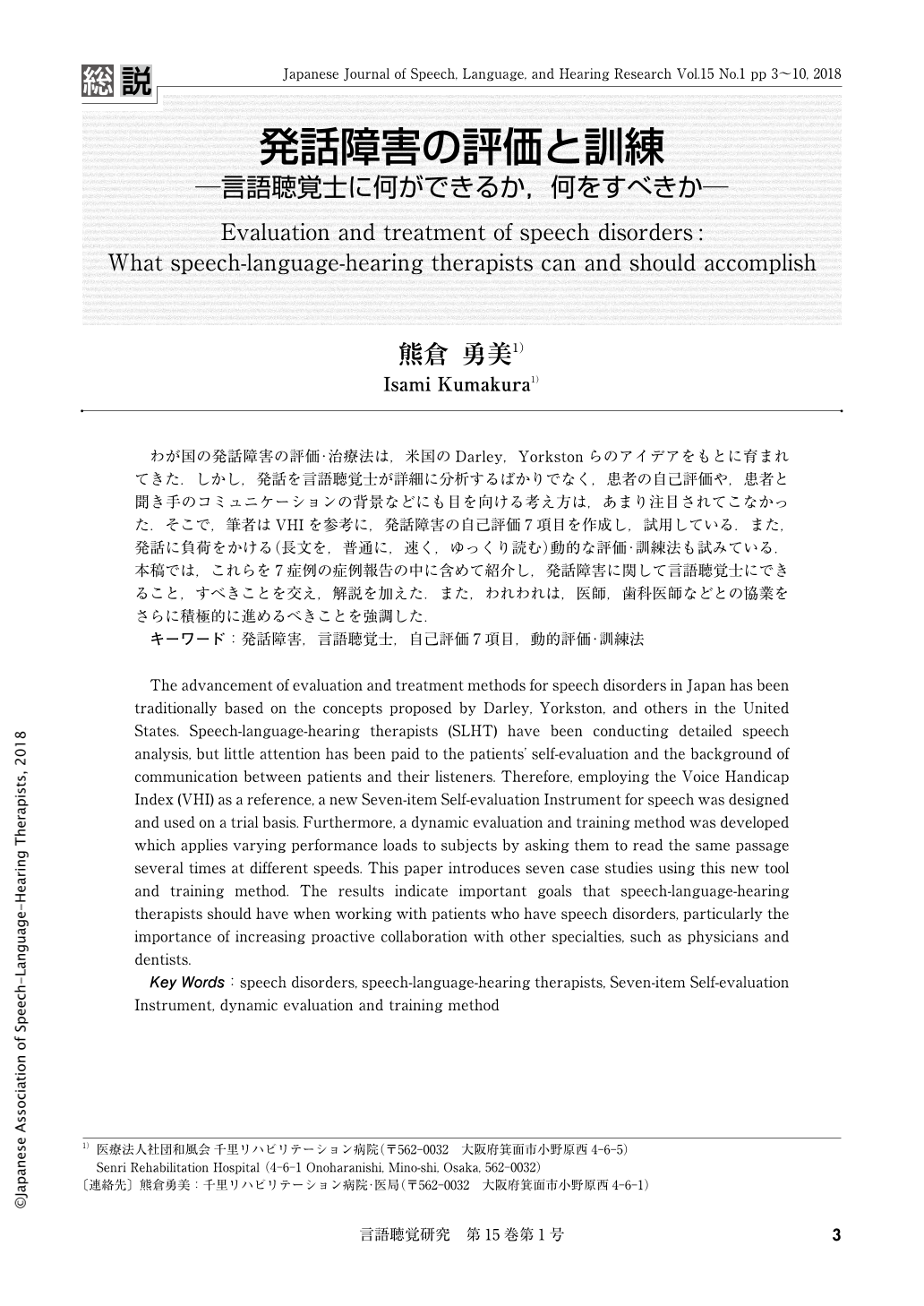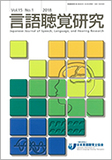Japanese
English
- 有料閲覧
- Abstract 文献概要
- 1ページ目 Look Inside
- 参考文献 Reference
わが国の発話障害の評価・治療法は,米国のDarley,Yorkstonらのアイデアをもとに育まれてきた.しかし,発話を言語聴覚士が詳細に分析するばかりでなく,患者の自己評価や,患者と聞き手のコミュニケーションの背景などにも目を向ける考え方は,あまり注目されてこなかった.そこで,筆者はVHIを参考に,発話障害の自己評価7項目を作成し,試用している.また,発話に負荷をかける(長文を,普通に,速く,ゆっくり読む)動的な評価・訓練法も試みている.本稿では,これらを7症例の症例報告の中に含めて紹介し,発話障害に関して言語聴覚士にできること,すべきことを交え,解説を加えた.また,われわれは,医師,歯科医師などとの協業をさらに積極的に進めるべきことを強調した.
The advancement of evaluation and treatment methods for speech disorders in Japan has been traditionally based on the concepts proposed by Darley, Yorkston, and others in the United States. Speech-language-hearing therapists (SLHT) have been conducting detailed speech analysis, but little attention has been paid to the patients' self-evaluation and the background of communication between patients and their listeners. Therefore, employing the Voice Handicap Index (VHI) as a reference, a new Seven-item Self-evaluation Instrument for speech was designed and used on a trial basis. Furthermore, a dynamic evaluation and training method was developed which applies varying performance loads to subjects by asking them to read the same passage several times at different speeds. This paper introduces seven case studies using this new tool and training method. The results indicate important goals that speech-language-hearing therapists should have when working with patients who have speech disorders, particularly the importance of increasing proactive collaboration with other specialties, such as physicians and dentists.

Copyright © 2018, Japanese Association of Speech-Language-Hearing Therapists. All rights reserved.


